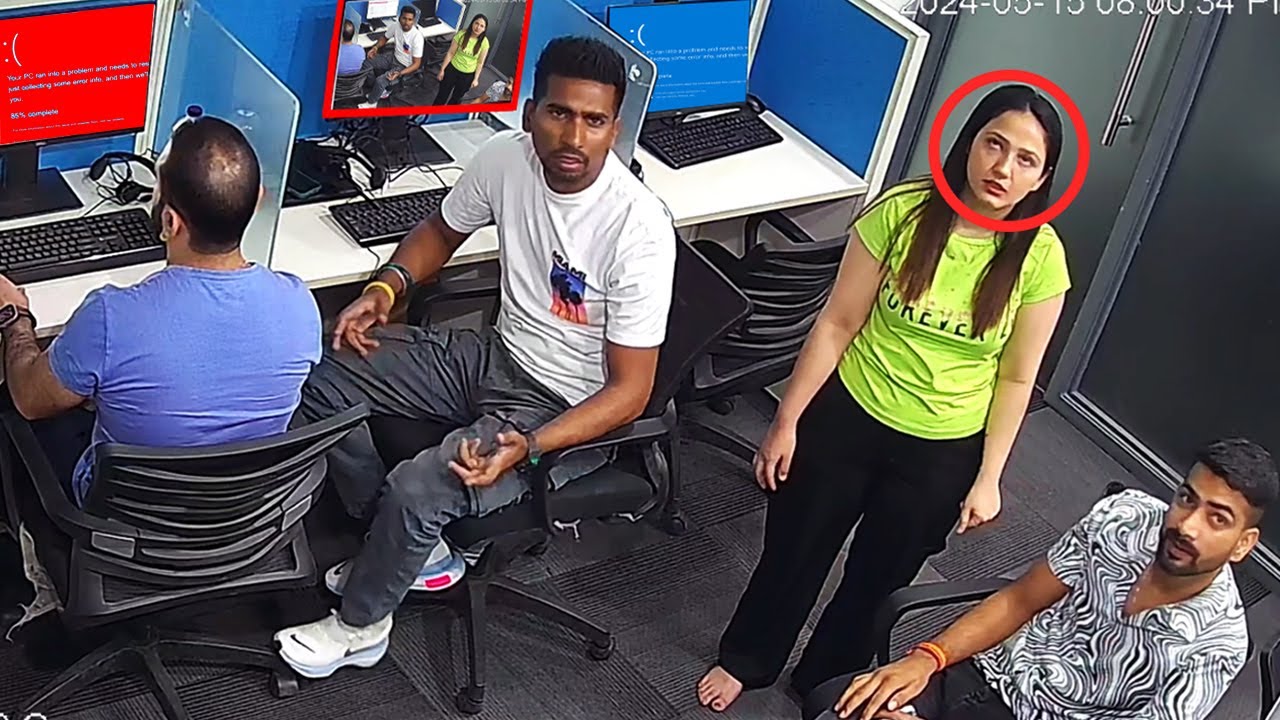The world of cybercrime thrives on deception, anonymity, and the ability to manipulate unsuspecting victims from the shadows. Scammers operate under the assumption that their identities remain concealed, hiding behind fake names, masked IP addresses, and elaborate scripts designed to instill fear and urgency in their targets. They think they are untouchable, merely voices on the other end of a call or lines of code infecting systems worldwide. But what happens when they are suddenly yanked out of their safe, invisible world and forced to confront the uncomfortable truth—seeing themselves on their own CCTV cameras, broadcasted on the very computer they intended to exploit? The idea itself sounds like something out of a psychological thriller, but in the world of digital justice, such moments serve as the ultimate counterstrike against those who make a living by preying on the vulnerable.
The power dynamics between a scammer and their victim are built entirely on psychological leverage. Whether it’s a fake IRS agent threatening arrest, a fraudulent tech support specialist claiming a virus has infected your system, or a banking imposter warning you of unauthorized transactions, their success depends on creating fear and confusion. Most victims panic, follow instructions, and unwittingly grant access to their personal information or finances. But the equation shifts entirely when the victim is not only aware of the scam but is prepared to fight back in a way the scammer never expects. There is no greater psychological counterattack than exposing a criminal’s own vulnerabilities—forcing them to realize they are not hidden, not invincible, and not in control.

Imagine the moment of sheer disbelief when a scammer, seated comfortably in their overseas call center, casually running their next script, suddenly hears details about their own surroundings being described back to them. The quiet hum of fluorescent lights, the placement of a security camera in the upper-right corner of the room, the red coffee mug on the desk near the monitors—details that should be known only to those physically present in that location. The scammer hesitates. Their previously confident tone wavers. A nervous chuckle, a half-hearted attempt to dismiss it as coincidence. But then, the ultimate shock—seeing their own CCTV feed appear on the very screen they are attempting to control. The realization hits like a punch to the gut: they are being watched, just as they have spent their days watching and deceiving others.
There is an unspoken arrogance among cybercriminals, a belief that they exist outside the boundaries of accountability. Operating from distant locations, using fake names, and relying on call scripts, they see themselves as untouchable. This illusion is shattered the moment they become the observed instead of the observer. The psychological impact is profound. A scammer who spends their days coercing elderly victims into draining their bank accounts suddenly finds themselves paralyzed by the fear they so easily inflicted on others. The room they considered their domain, their workspace, their shield of anonymity, is no longer safe. They are exposed. Vulnerable. Just like their victims.
One of the most fascinating aspects of this kind of psychological reversal is how quickly scammers attempt to regain control of the situation. Some deny reality, claiming it must be a trick. Some lash out in anger, cursing and shouting as if volume alone can reassert their dominance. Others panic, disconnecting the call and alerting their coworkers, leading to an entire scam operation momentarily descending into chaos. The effectiveness of the strategy isn’t just in the moment of shock but in the long-term paranoia it creates. The seed of doubt has been planted—what if every call they make from now on is being monitored? What if their identities aren’t as secure as they thought? What if the next victim they try to deceive is actually someone capable of turning the tables on them in ways they never imagined?
Beyond the immediate disruption, the implications of such an exposure ripple outward. Scam call centers thrive on their workforce believing in their safety. But when even one employee experiences a moment of exposure—when they see their own image staring back at them from a security feed they never thought could be accessed—it spreads like wildfire. Other employees start asking questions. Internal trust erodes. Some may even begin quitting out of fear that law enforcement or cybersecurity experts are closing in. The illusion of invincibility is broken, and with it, the foundation of the scam operation weakens.
This moment of exposure also forces an uncomfortable self-awareness upon the scammer. Many enter the industry under financial desperation, lured by the promise of easy money. Others justify their actions by convincing themselves that their victims are wealthy, gullible, or deserving of being scammed. But when they become the ones being deceived, when they feel that moment of helplessness and confusion they so routinely create in others, it becomes much harder to ignore the reality of their actions. Some will continue scamming, hardened by the experience. But others, rattled by the psychological impact of seeing themselves as the victim for the first time, may begin to reconsider their choices.
The intersection of technology and justice is constantly evolving, and while traditional law enforcement struggles to keep up with the scale of global cybercrime, vigilante-style digital counterattacks introduce new, unexpected consequences for scammers. The ability to expose a fraudster’s own security feeds is not just a technical achievement—it’s a psychological weapon that forces criminals to confront their own fears. In a world where cybercriminals rely on invisibility, nothing is more terrifying than realizing they have been seen.

